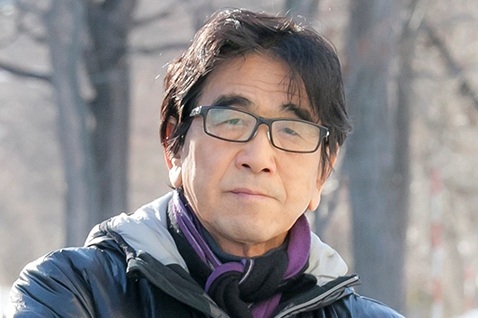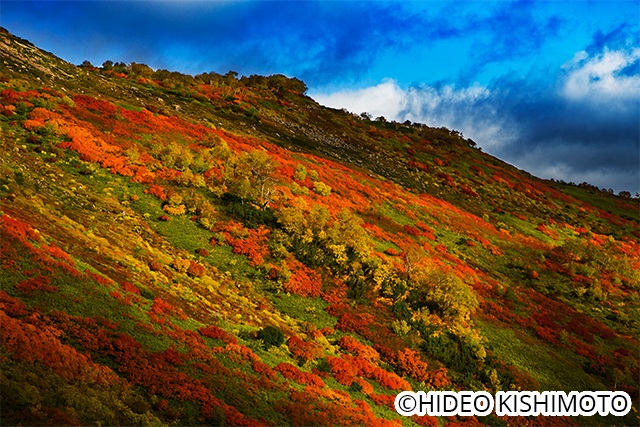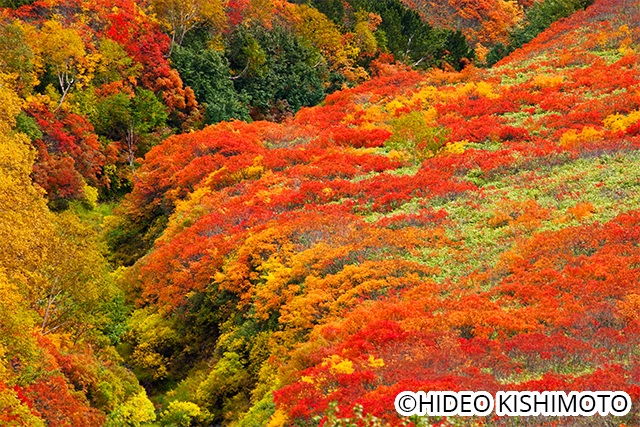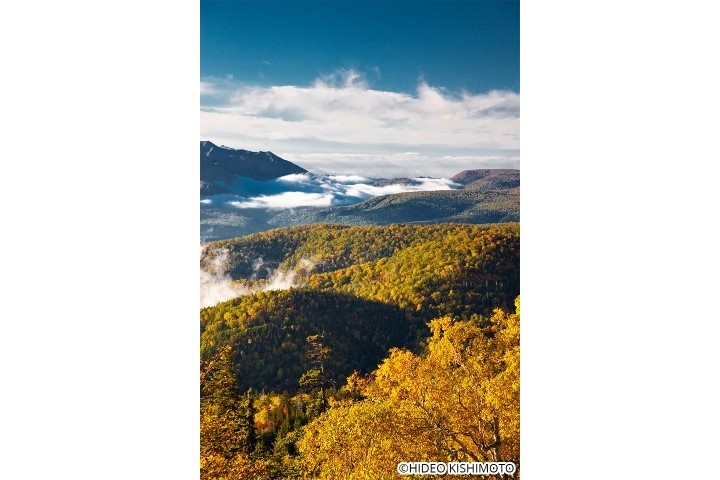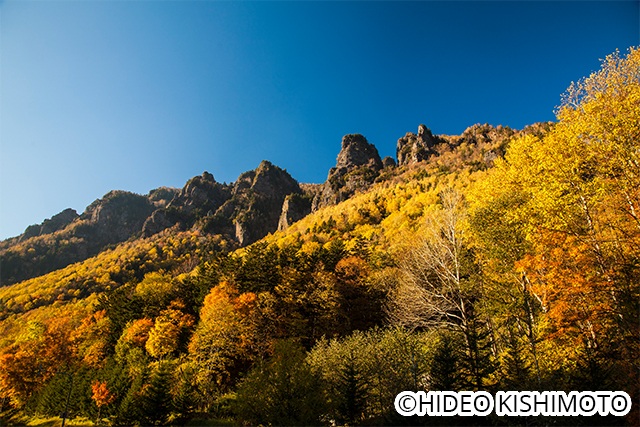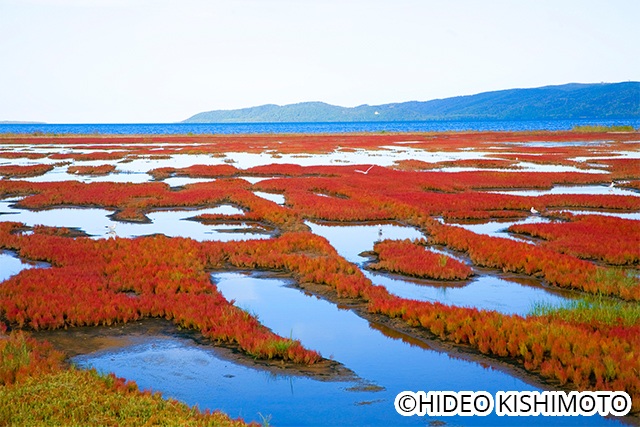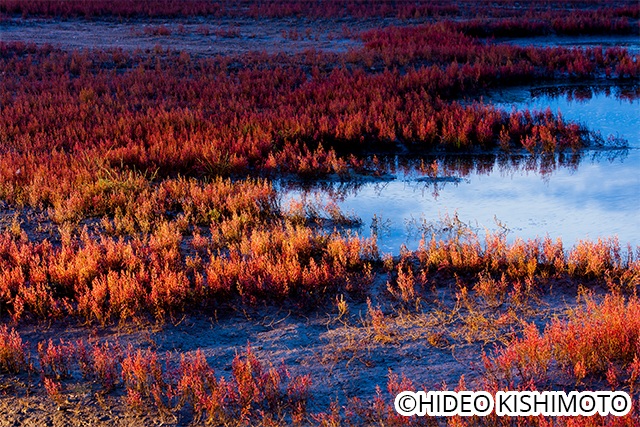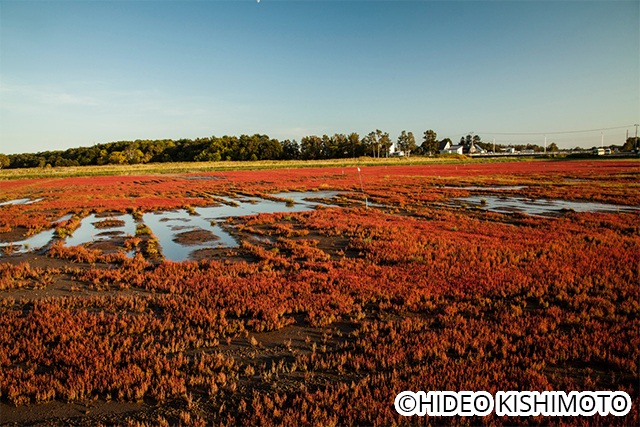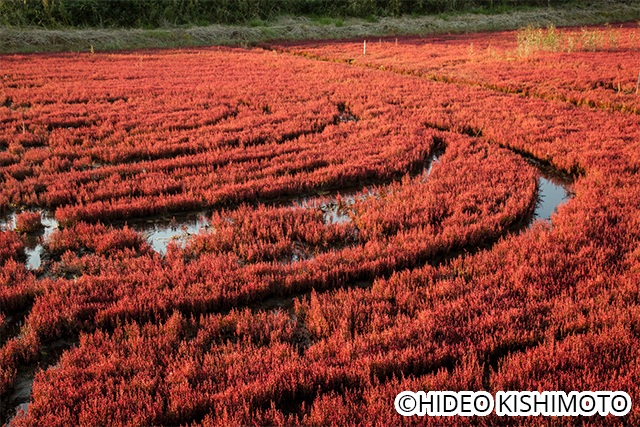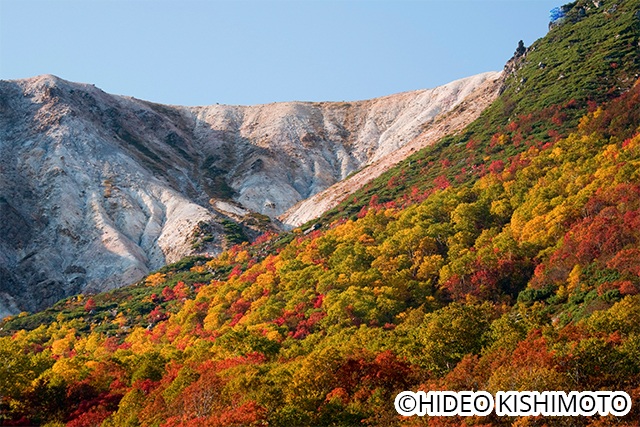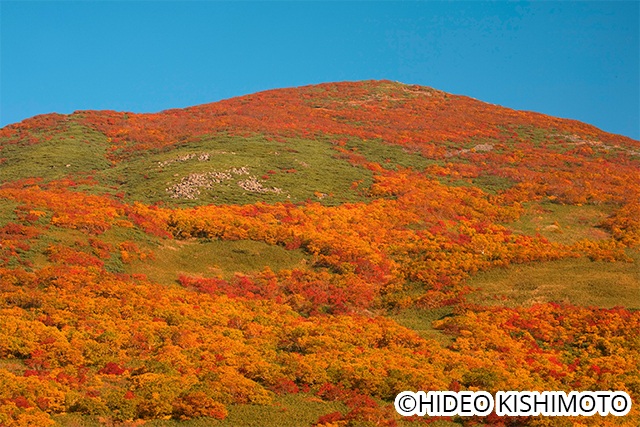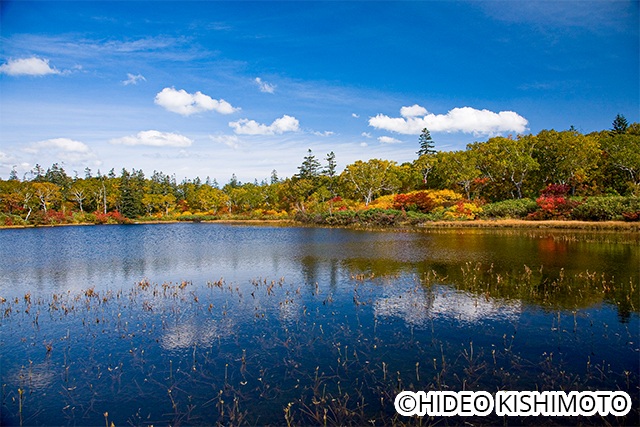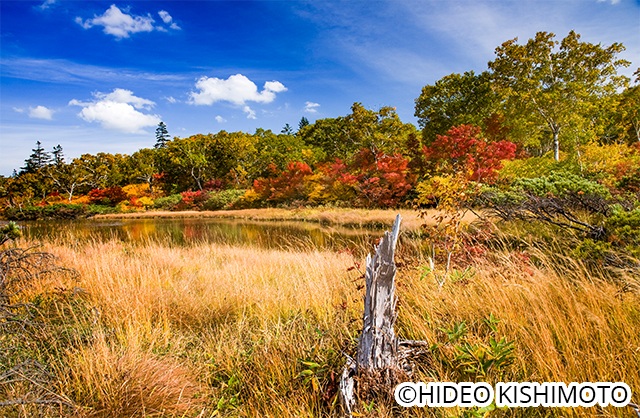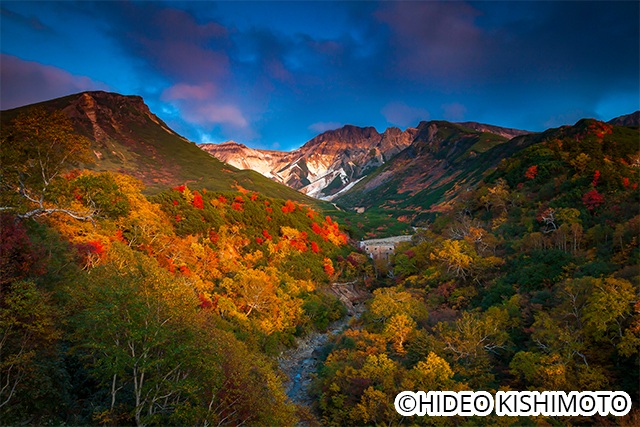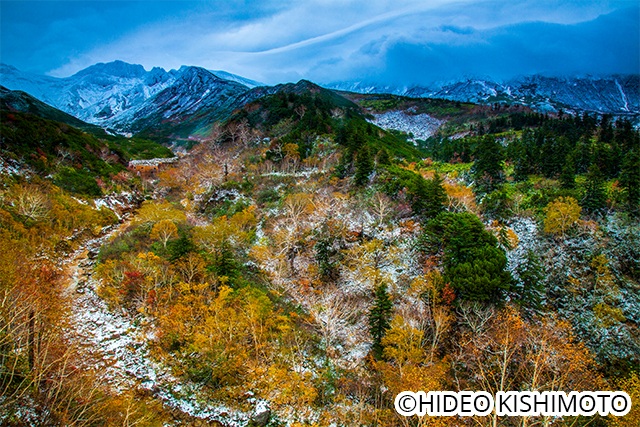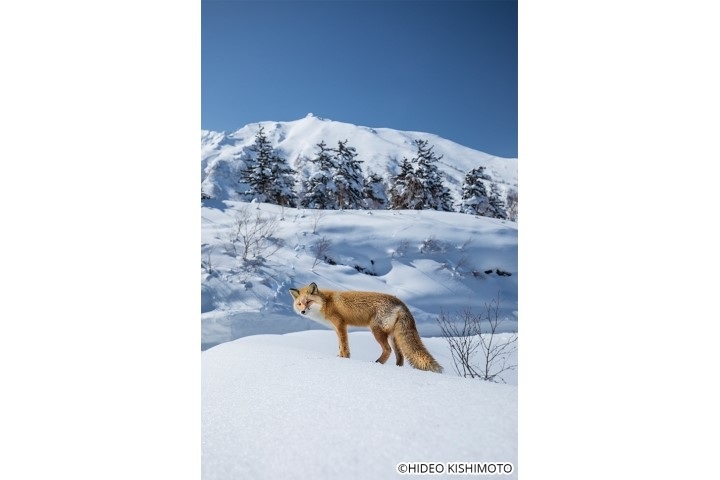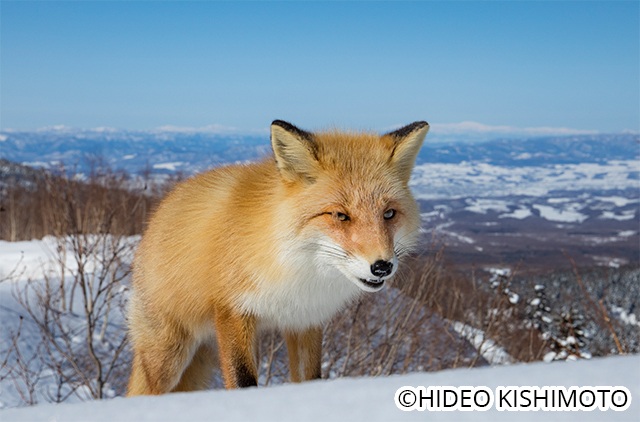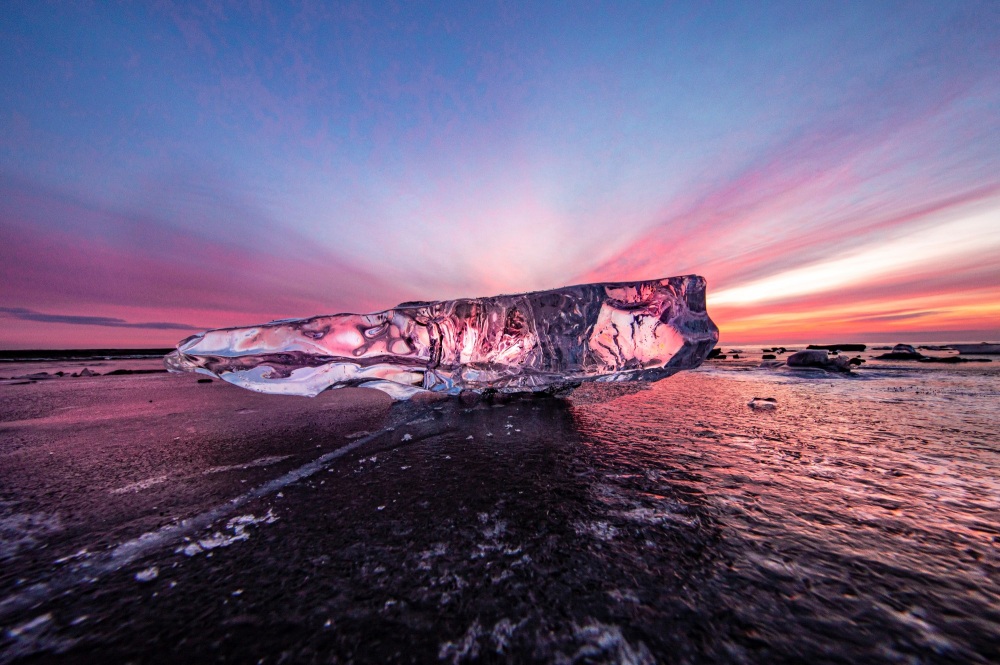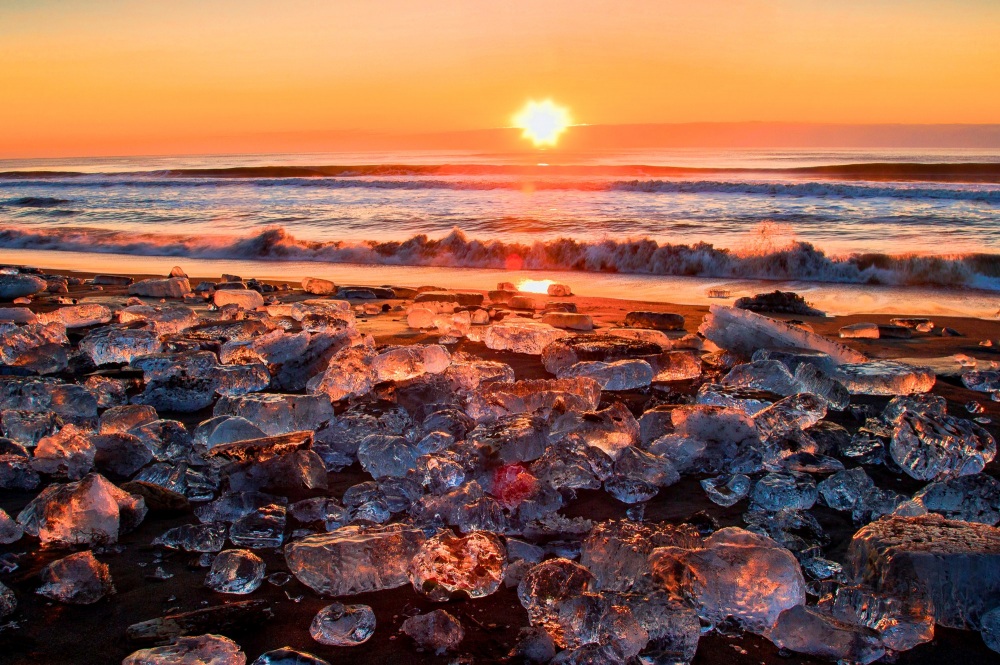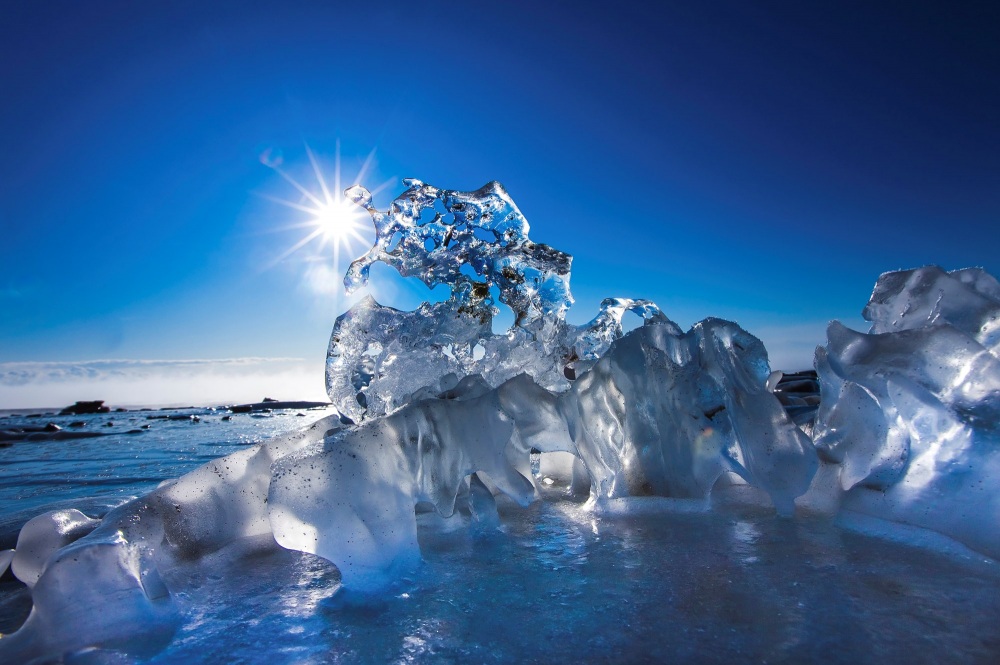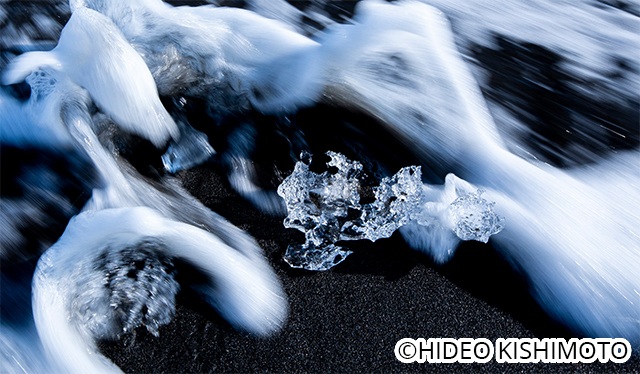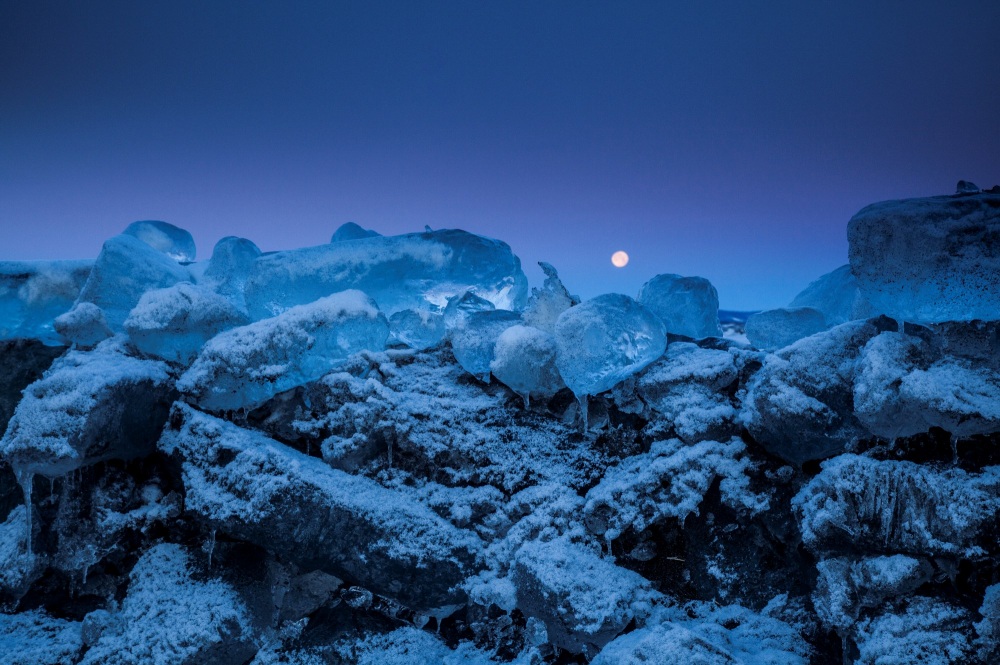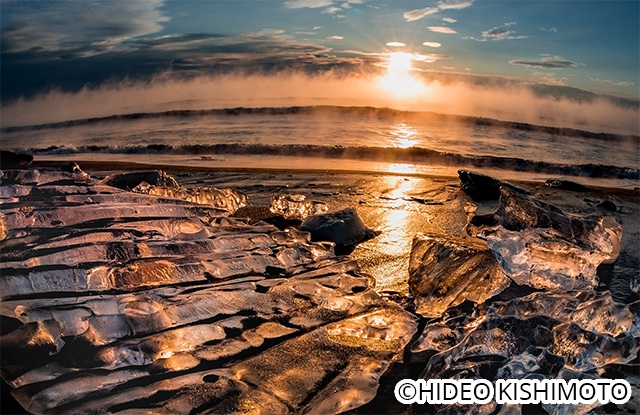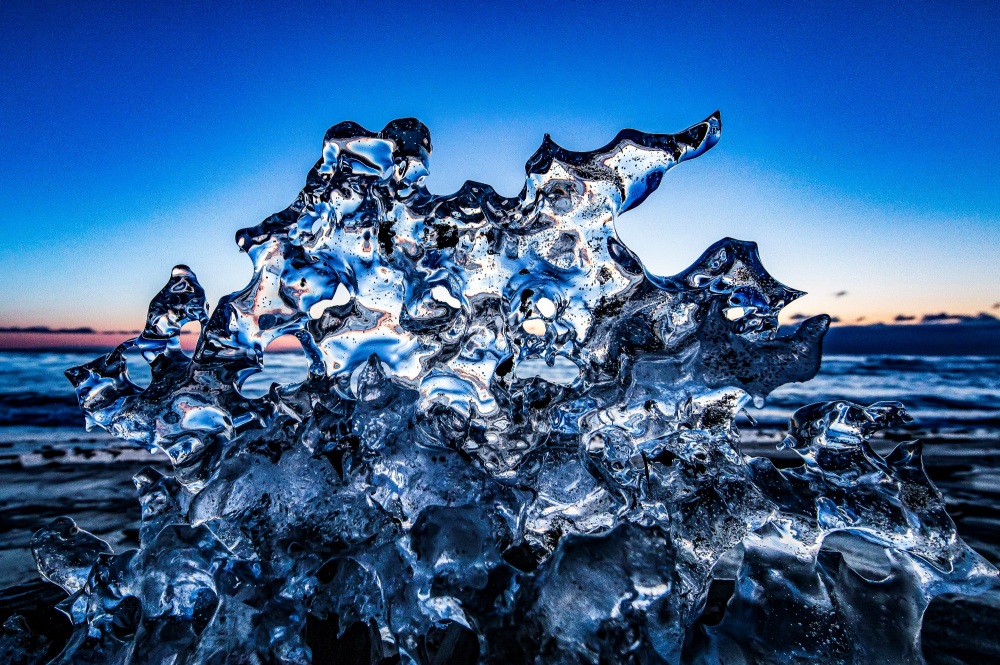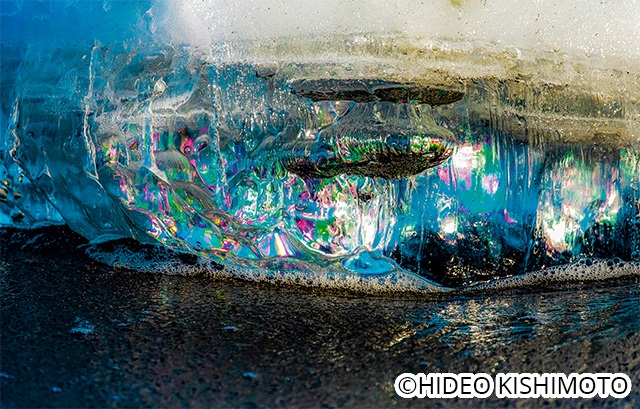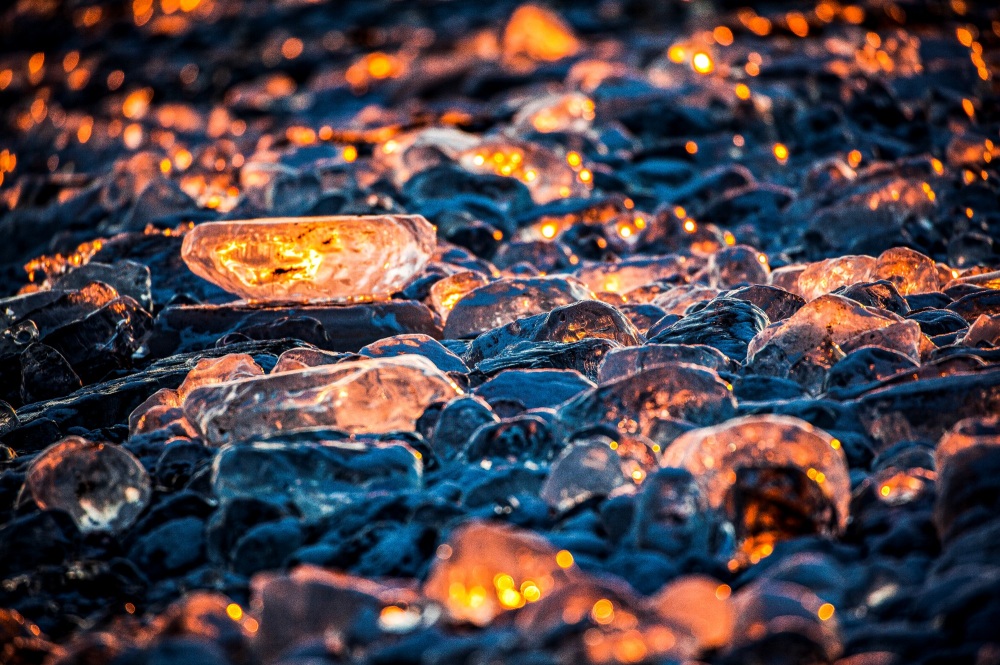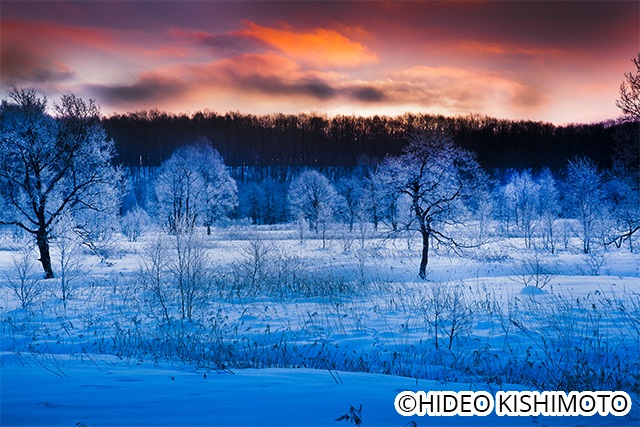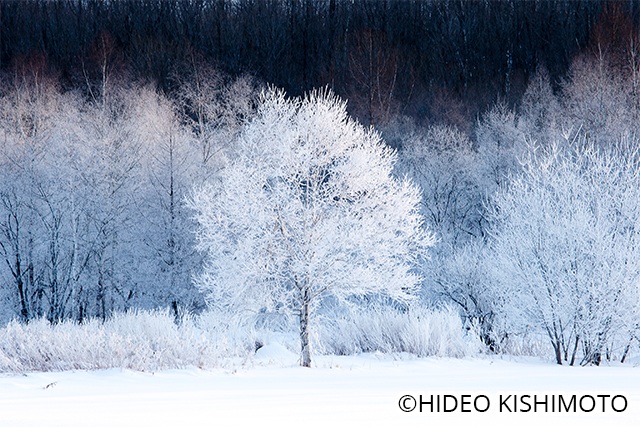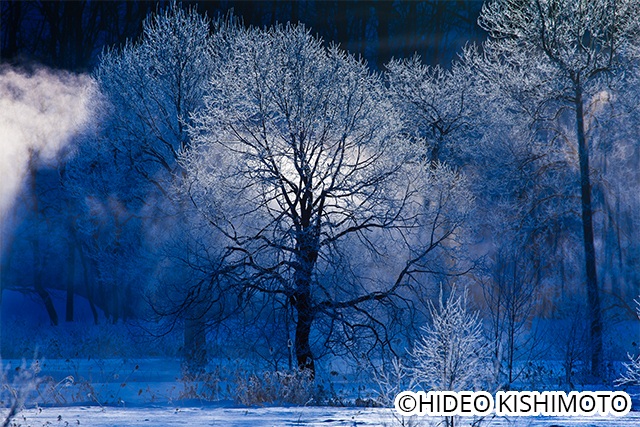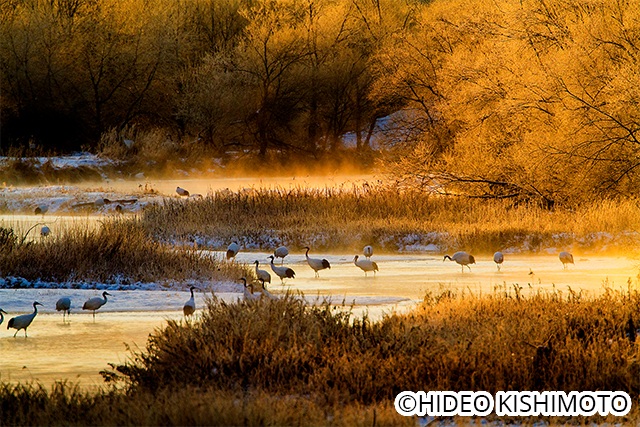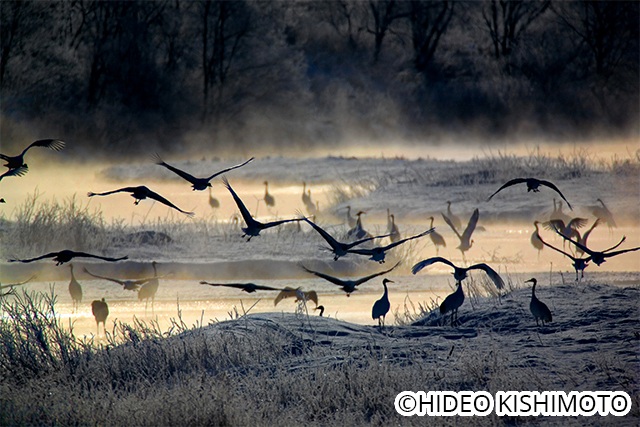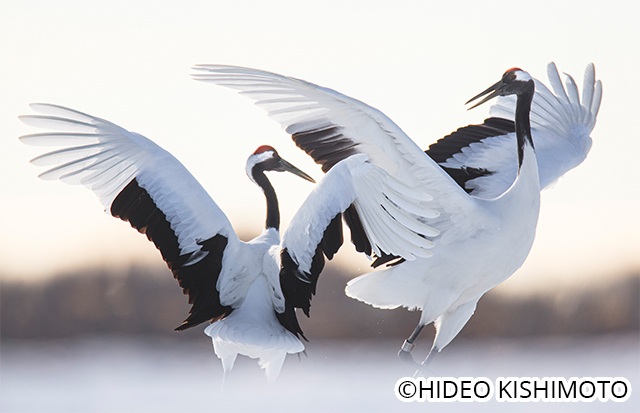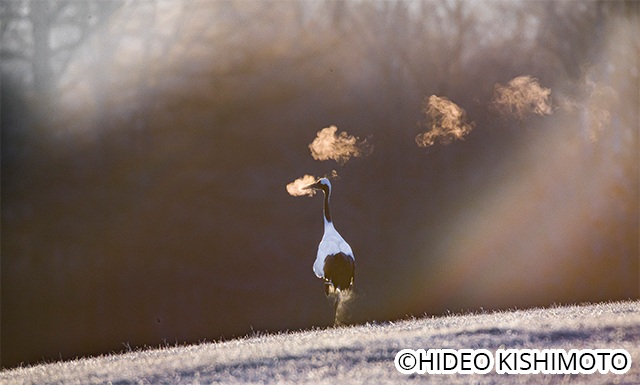Photographer Recommends 7 Spectacular Views of Hokkaido in Autumn and Winter
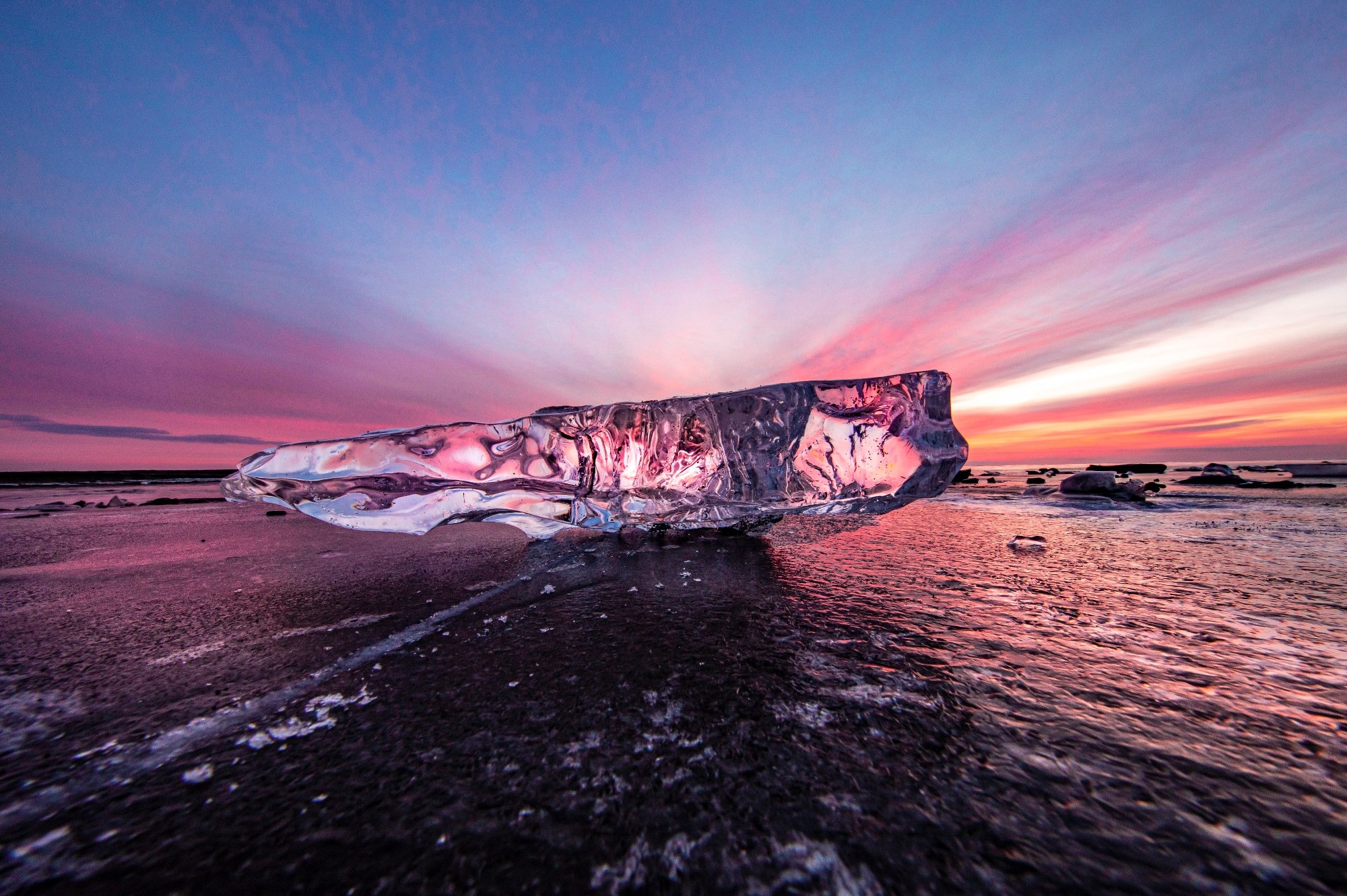
In Hokkaido, the footsteps of the next season can already be heard. Because it is a northern country, Hokkaido in autumn and winter offers a variety of spectacular scenery that you should definitely take pictures of. We asked Mr. Kishimoto, a professional photographer active on the front lines in Hokkaido, for his recommendations for scenic spots in the coming season, continuing on from the summer. So, pack your winter gear, bring your camera, and let's go see some of Hokkaido's spectacular scenery that you haven't seen yet!
- * Please note that the text shown on this page includes machine translations.
This is the person who chose us! Hideo Kishimoto, a photographer living in Sapporo
<profile> Born in Saroma Town, Hokkaido.
He is the president of Sapporo Commercial Photo Studio Co., Ltd. and a member of APA Japan Advertising Photographers' Association, Japan Photographic Society, Japan Natural Science Photography Association, and Tourism Ambassador of Toyokoro Town, Hokkaido (jewelry ice ).
Fascinated by the vitality and beauty of Hokkaido's wilderness and the wild animals and birds that inhabit it, he has exhibited his work both in Japan and abroad under the theme of “Life, the Splendor of a Moment. She has exhibited her works at the World Exposition in London (Special Jury Prize), Lausanne, Switzerland, and was invited to participate in the Republic of Malta Art Festival. Won a prize in the Japan Tourism Poster Contest for three consecutive years for his poster of jewelry ice.
Autumn leaves of Akadake Ginsendai and Sounkyo
Mr. Kishimoto is a firm believer that Ginsendai, the trailhead for the Daisetsuzan mountain range's Aka-dake (Mt. Akadake), is “known as the best place in Japan to see the earliest colored leaves. Although it varies from year to year, the peak of the autumn foliage usually occurs between September 15 and 22. The best time to visit is during this one-week period. If you miss this period, there will be frost on the mountain and the colors will not be as good as they could be. Ginsendai, located at an elevation of 1,517 meters, offers a beautiful contrast between the cliffs and the autumn leaves, overwhelming the viewer.
During the autumn foliage season, you cannot drive to Ginsendai. Instead, you need to take a shuttle bus from the temporary parking lot at Daisetsu Lakesite (about 35 minutes). After getting off the bus, you enter the trail to Mt. Aka-dake from the Forest Patrol Office and proceed along the trail. After walking for about 30 minutes, you will encounter a beautiful scenic view like a painting, where the green of the coniferous trees that do not change color remains, and the birch and rowan trees have turned red.
Walking for another 15 minutes, you will find an even deeper landscape. The combination of red, yellow, orange, and green is so beautiful that you can't help but be captivated. "This is my favorite spot in Ginsendai, and I call it the 'Red Waterfall of Autumn Leaves.' The bright red leaves look like they are flowing down like a waterfall," says Mr. Kishimoto, capturing its charm with his unique perspective. He recommends enjoying the autumn leaves from Ginsendai to the First Flower Garden.
Mr. Kishimoto's recommended time is around 6:00 in the early morning. If conditions are right, you can expect to see a sea of clouds like this in the photo. "The sea of clouds and the autumn leaves spreading out below are a precious sight that can only be photographed at this time of year. Seeing it in person is truly moving! Let's get up early and take the first shuttle bus," he says. Since there are slippery spots on the trail, trekking shoes are recommended.
On your way back from Ginsendai, you should stop by Sounkyo Onsen, which is about a 20-minute drive from Daisetsu Lakesite. Mr. Kishimoto says, "It's a must-see scenic spot to photograph along with Ginsendai. Near the hot spring town, there is a gorge with columnar joints, one of the symbols of Sounkyo. The trees growing there turn red, and you can take beautiful photos of the entire gorge glowing golden." Like Ginsendai, it is a recommended spot to enjoy the early autumn foliage.
Coral grass in Lake Notoro
Lake Notoro, located in the north of Abashiri City, offers a different view of the autumn leaves than the trees decorating the mountains. The plant that turns the lake red is called “coral grass. Lake Notoro is known as the largest coral grass colony in Japan. The coral grass colors the surface of the lake with a fiery crimson color, which is a spectacular sight that can only be seen in autumn,” Mr. Kishimoto happily explains.
The Lake Notoro coral grass colonies are divided into four areas: Ubaranai, Notoro, Misaki, and Heiwa. Among them, the Ubaranai colony is the largest and most recommended. It is easily accessible as it is located right next to the national highway, and there are wooden walkways within the site, allowing you to enjoy the autumn foliage while strolling. "Since there are no high mountains or buildings around, the sky is wide, and you can take vivid photos of the blue lake and the red coral grass," says Mr. Kishimoto.
Coral grass is an annual plant called Akkeshi grass. It is a rare plant designated as a natural monument by Hokkaido. It is a leafless plant that is usually green, but in autumn, its stems turn red, giving it this bright red color. It is called coral grass because it resembles coral and grows to a height of 15 to 30 cm. You can take close-up photos of the coral grass from the walkways.
Lake Notoro is connected to the sea, and by October, when the autumn foliage season is ending, the coral grass becomes less visible as it gets submerged by the high tide. Therefore, the best season is around September 20th. The appearance of the coral grass changes depending on the time of day, with Mr. Kishimoto recommending daytime for clear photos and early morning or dusk for more atmospheric shots. Since it is a wetland area, there are many mosquitoes, so it is advisable to bring insect repellent while enjoying your walk.
"At one point, the coral grass faced poor growth due to soil improvement efforts, but thanks to the local community and academic institutions' restoration projects, it has now made a remarkable recovery. I believe the scale of the autumn foliage is increasing year by year. I hope everyone can enjoy the ever-increasing beauty of the coral grass," says Mr. Kishimoto. To continue enjoying the beautiful sight of the red carpet-like coral grass every year, it is important for viewers and photographers to follow the rules.
Autumn Foliage in Niseko
The Niseko area is located about two hours by car from New Chitose Airport. Niseko is often associated with the silvery snow-capped mountains of winter, but before the snow covers the area, Niseko Panorama Line and Shinsen-numa, which are dotted with autumn foliage spots and spectacular views, are still a scenic area with great natural beauty. Mr. Kishimoto also describes the charm of Niseko in autumn, saying, “Niseko is a precious place where you can enjoy unspoiled nature in spite of being a resort area.
The Echo Line, Route 58 Kutchan-Niseko, which runs between the Niseko mountains of Iwaonupuri and Annupuri, is a scenic drive where you can enjoy untouched nature. The leaves start to change color in mid-September and reach their peak around late September. "It's a very pleasant road to drive on. The contrast of the colorful trees beautifully decorates the mountain slopes," says Mr. Kishimoto. By using the Niseko Annupuri Gondola, you can enjoy a magnificent panorama from the 1,000-meter-high observation deck, including views of Mt. Yotei and Lake Toya.
One of the famous peaks of Niseko, Annupuri, can be seen while driving. Mr. Kishimoto says, "The hiking trails are well-maintained, making it a popular mountain for many beginners to challenge. The vivid colors of the maple, rowan, and birch trees beautifully dye the green mountains in red and yellow. Nearby is the Goshiki Onsen Village, where you can relax after enjoying the autumn leaves," he recommends. Enjoying a relaxing bath in the hot springs while gazing at the autumn foliage is a delightful way to experience the season.
In Niseko, which has many autumn foliage spots, another recommended place by Mr. Kishimoto is Shinsen-numa, located at an altitude of about 770 meters in Kyowa Town. The name comes from the idea that it is a place where gods and immortals live. "It is known for its beautiful autumn leaves, with splendid colors from birch and maple trees. On clear days, the beautiful pond acts as a mirror, reflecting the autumn leaves and blue sky, creating a mystical photo. It is truly a place that even gods and immortals would fall in love with," Mr. Kishimoto said with a smile.
Shinsen-numa has wooden walkways, allowing you to leisurely enjoy a stroll around the pond dyed in autumn colors. "The peak time for photographing the autumn leaves is late September, but the foliage here is also wonderful towards the end of the season. In late autumn, you can capture landscapes with overall tawny hues. If the temperature is low in the early morning, it is also nice to photograph the delicate scene of thin ice on the water surface with floating fallen leaves," he added.
Autumn - Winter in Kamifurano
The Furano area is famous for its lavender fields in summer. You should not miss the golden scenery in autumn and the wildlife (foxes) in winter, which are different from those in summer. Mr. Kishimoto recommends the Kamifurano area. After summer is over, visitors can enjoy the charm of nature up close and personal in a more relaxed atmosphere. Mr. Kishimoto also says, “I hope visitors can see the natural scenery from fall to winter and midwinter and the wild animals that live there in their natural state.
Like Sounkyo and Ginsendai in Mt. Aka-dake, Tokachidake Onsen is known for its early autumn foliage. It is about a 30-minute drive from Kamifurano city center, and nearby is the world-famous "Biei Blue Pond." The autumn leaves at Tokachidake Onsen start to change color in early September and reach their peak from late September to early October. The autumn leaves that color the majestic mountains shine vividly, like paint suddenly dropped on the green mountains, making it one of Mr. Kishimoto's favorite places to photograph every year.
The place where the first and this photo were taken is "Ryouunkaku" at Tokachidake Onsen. It is the highest hot spring area in Hokkaido, and part of the facility is open to photography and hiking enthusiasts. "From here, you can enjoy a panoramic view of the mountains. There is also an open-air bath with a view of the autumn leaves, so I recommend enjoying the hot springs after taking photos," advises Mr. Kishimoto. "In late October, the first snow falls, creating a spectacular view mixed with autumn leaves and snow. You will be moved by the transition of nature from autumn to winter."
In Kamifurano and other parts of Hokkaido in winter, you can often see foxes. "Foxes with their bushy tails on the snowy ground make for a picturesque scene. They are dignified and cool! Wild foxes are wary of people and quickly run away, so it's best to take photos as soon as you spot them. A telephoto lens is useful for capturing them from a distance," says Mr. Kishimoto.
He also advises, "If a fox comes close, stay calm and take photos. If you manage to capture them, you're lucky, but it's also good to use a wide-angle lens to capture their expressions." Mr. Kishimoto adds, "Feeding wild animals has become a problem in recent years. Instead of interacting with them because they are cute, I hope people enjoy taking photos of them," he says with a gentle smile.
Jewelry Ice
One of Kishimoto's best-known works is “Jewelry Ice,” in which sparkling ice suddenly appears like jewels on the seashore, from mid-January to the end of February on the beach near the mouth of the Tokachi River in Otsu, Toyokoro Town, East Hokkaido, and the mysterious look of this ice jewel is a moving experience for all who see it. No matter how many times I go there or how many times I take pictures, each time a new beauty dwells in the ice. There are various interesting things to see each time. I recommend this place with confidence,” says Mr. Kishimoto.
Jewelry Ice is a natural phenomenon where ice covering the Tokachi River flows into the Pacific Ocean and washes up on the Otsu Coast, shining beautifully in the sunlight. Mr. Kishimoto, who also serves as a tourism ambassador for Jewelry Ice, explains, "As the ice is tossed by rough waves, its edges are smoothed, turning it into crystal-clear ice. Unlike drift ice, which is white, Jewelry Ice is characterized by its transparent, crystal-like appearance."
At dawn, various sizes of ice chunks line the river mouth. You can enjoy the sight of the transparent ice sparkling on the shore as it is illuminated by the morning sun. Mr. Kishimoto has been captivated by this beauty for ten years. Along with his photographer friends, he has been sharing this wonder with many people, capturing its various expressions every year. Thanks to these efforts, Jewelry Ice was featured in The New York Times in 2011, gaining international attention.
In addition to photos focusing on the Jewelry Ice itself, Mr. Kishimoto suggests taking advantage of its location at the water's edge. "Using a slow shutter speed, you can capture interesting photos that contrast the powerful waves with the delicate, glass-like Jewelry Ice," he says. Photography enthusiasts should definitely give it a try.
Mr. Kishimoto calls this photo "a miraculous shot." While walking along the beach, he discovered Jewelry Ice shining in rainbow colors due to the prism effect of light and quickly took the photo. "Because of its high transparency, Jewelry Ice can display various colors depending on the angle of the light. It's also interesting how the colors change over time," he says. If you're lucky, you might capture a shot like this. Let's go see Jewelry Ice and search for that miraculous shot.
Pure white frost in Sarabetsu village
About 10 minutes by car from Tokachi-Obihiro Airport, you can witness a stunning spectacle of pure white frost (rime ice) blanketing the frozen plains in the Seo district of Sarabetsu Village, located in southern Tokachi. During the harsh winter months of January and February, when temperatures drop below -20°C on cold mornings, this frost forms and creates a fantastical landscape by coating the surrounding trees in white. Mr. Kishimoto recommends, "While frost is typically seen on winter mountains, here you can easily view it on the plains. The nostalgic panorama of completely frozen trees spreading across the landscape is truly worth seeing."
This frost phenomenon occurs when water vapor rising from the stream's surface freezes, forming white and semi-transparent crystals that attach to the trees. Such a combination of climate conditions and vegetation is said to be rare. "Many photographers visit to capture these natural art-like frost formations. On clear days, you can expect to capture stunning shots contrasting the red dawn sky with the white frost," explains Mr. Kishimoto.
According to Mr. Kishimoto, the best time to photograph the frost is from 30 minutes before dawn until about 30 minutes after sunrise. "After this time, the sunlight and rising temperatures cause the frost to melt and disappear. While this spectacular view is only available for a limited precious time, perhaps this ephemeral nature is part of its charm. When you actually see it, you'll be so captivated by the beautiful world of river mist and frost that you'll forget how 'shibareru' (meaning bitterly cold in Hokkaido dialect)."
After sunrise, you can capture photos of this pure white landscape. The dignified presence of the frosted trees takes your breath away. "Since the frost quickly disappears with wind, it's best to choose a windless day. While most people travel by car, it's very cold outside, so to prevent lens fogging from the temperature difference between the car interior and outside, I recommend taking your camera out early before shooting."
While the sun is still low, you can enjoy photos that showcase the collaboration between the trees and the sun. "Although the shooting time is limited, this is a place where you can see various expressions of frost. It's less than an hour's drive from the jeweled ice spot in Otsu, Toyokoro Town, so you might want to visit both," suggests Mr. Kishimoto. Let's enjoy touring these winter spectacles while looking forward to encountering each magnificent view.
Red-Crowned Cranes in Tsurui Village
In winter, Mr. Kishimoto photographs red-crowned cranes, which are designated as a Special Natural Monument of Japan. While these cranes can be seen throughout eastern Hokkaido, Mr. Kishimoto often shoots in Tsurui Village. "Tsurui means 'cranes dwell' - it's the village bird. True to its name, many red-crowned cranes gather here," Mr. Kishimoto explains his choice of location. In the village, you can observe these cranes thriving despite the cold weather.
There are several spots to view the cranes in Tsurui Village, one being the Otowa Bridge. This serves as a roosting area where many cranes rest during morning and evening hours. Mr. Kishimoto explains that the cranes often rest in water to protect themselves from predators like foxes, making Otowa Bridge an ideal location. Due to the cold water temperature, they characteristically stand on one leg. The bridge offers a precious vantage point to observe the cranes in their natural state without disturbing them.
Mr. Kishimoto recommends early morning or evening for viewing. "In the severe winter mornings, you can capture mystical shots of cranes emerging from the river mist. You might also see them energetically taking off toward their feeding grounds. Evening is perfect for capturing their return from feeding," he says. He also reminds visitors to take their trash with them and never use flash photography out of respect for the cranes.
A distinctive feature of red-crowned cranes is their exposed red patch on top of their heads. "While you might see their famous courtship dance during breeding season, sometimes they're just playing around. You can't help but smile when you see these cranes frolicking together," Mr. Kishimoto shares as a viewing tip.
One of the places where cranes fly from Otowa Bridge in the morning to feed is the "Tsurui-Ito Red-crowned Crane Sanctuary" operated by the Wild Bird Society of Japan. Here, you can watch the cranes pecking at food and playing freely. "The cranes make a 'kak-kak-kak' sound, and in cold temperatures, their breath becomes visible as white vapor. Photographing this creates interesting images that seem to capture their breath," he explains.
Ranking of popular articles
- Hokkaido Summer Travel Guide
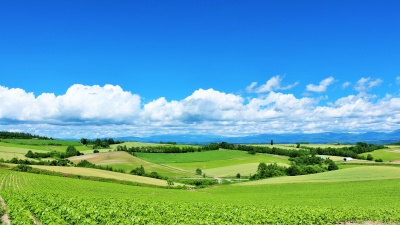
- https://www.visit-hokkaido.jp/en/feature/travelguide_summer
- Hokkaido Spring Travel Guide
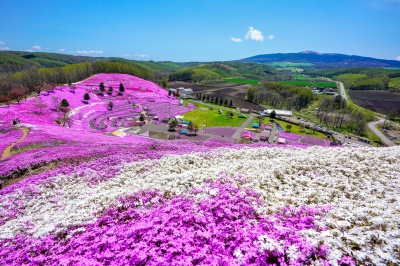
- https://www.visit-hokkaido.jp/en/feature/travelguide_spring
- Here are the recommended cherry blossom viewing spots!
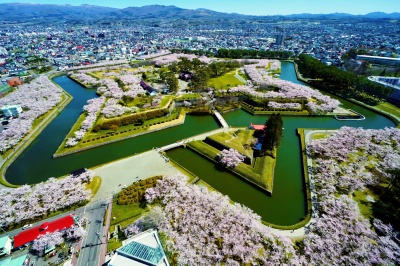
- https://www.visit-hokkaido.jp/en/feature/sakura
- When is the best time to see lavender? Recommended Lavender Spots in Hokkaido
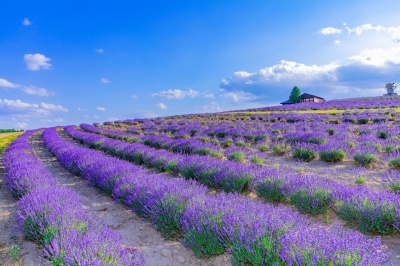
- https://www.visit-hokkaido.jp/en/feature/lavender
- Best Places to View Flowers in Hokkaido vol. 1

- https://www.visit-hokkaido.jp/en/feature/best-places-to-view-flowers-in-hokkaido-vol-1
